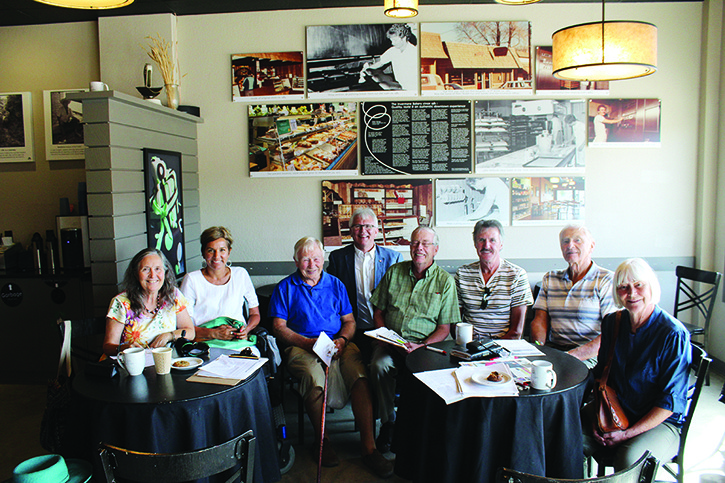After travelling through 14 towns throughout the Kootenay-Columbia electoral riding, MP Wayne Stetski is ready to put together a final report to table the Special Committee on Electoral Reform sometime next month.
Stetski began his tour on August 9th, stopping in Fernie before making 13 other stops, which included the final stop at the Invermere Bakery on August 19th. Along the way, Stetski has been discussing openly with the public their ideas and opinions on a variety of topics regarding how the federal government should overhaul Canada’s current plurality voting system to make every vote count. It’s a process, he said, that he’s thoroughly enjoyed.
“When people ask me what I like about being a Member of Parliament, what I like is the opportunity to do the kind of thing that we were doing here today and actually go out and meet with people,” he said. “I learn every day on the job.”
At Invermere’s meeting on Friday, Stetski opened the floor with a simple question: “Should voting be mandatory in Canada?”
To this, the response from the seven people in attendance was mixed. Some, like provincial NDP nominee for Columbia River-Revelstoke, Spring Hawes, initially said they loved the idea while others voiced the opinion that they would “… rather an inspired populous than a demanded vote.”
Stetski led the debate, pitching two more questions that centred around the idea of lowering the voting age to 16 while also switching to an electronic voting system.
“On the youth question, virtually everybody believes that there should be mandatory Civics training in schools where kids have to learn about the system and potentially have to vote in an election even if it doesn’t count nationally so that they start to take an interest in politics,” he said.
The main topic of interest at the open debate, though, was that of the voting reform from a plurality first-past-the-post system to that of a proportional representation system.
Stetski put forward a variety of the different voting systems that the Special Committee will be examining on its tour across the country for information. One of the main systems talked about was the idea of a single-transferable vote, which achieves proportional representation through ranked voting of an elector’s most preferred candidate.
Another method, which Stetski supported most, was the idea of a mixed-member proportional system that is a hybrid of the current system and proportional system. In this system, voters would be able to cast two votes — one for who they want to represent their voice in parliament and another for the party they want to form the government — that would be able to be adjusted so that the seats allocated to each party were in direct proportion to the percentage of votes they received in the election.
Essentially, Stetski asked the group, do you think it’s reasonable that 39 per cent of the vote can control 100 per cent of the power in government?
Citizens in attendance agreed that more needed to be done to ensure that parliament is more representative of the Canada that elected it to office. Stetski said that a byproduct of proportional representation would be less partisan politics and more collaboration across the aisle of the House of Commons.
“I’ve been involved in lots of different committees over the years in different groups and the more collaborative and co-operative that goes on, the better is going to be the outcome,” he said. “I believe that proportional representation would potentially lead to parties having to pay more attention to other perspectives on things, which will lead to a better Canada in the end.”
With his riding-wide tour now over, Stetski said he will finalize a report on his findings from the discussion at each of the meetings, which he will submit to the committee sometime in September. He has requested the Committee to make a stop in the riding to get a rural perspective for their information collection process and is still waiting to hear back on the request.
